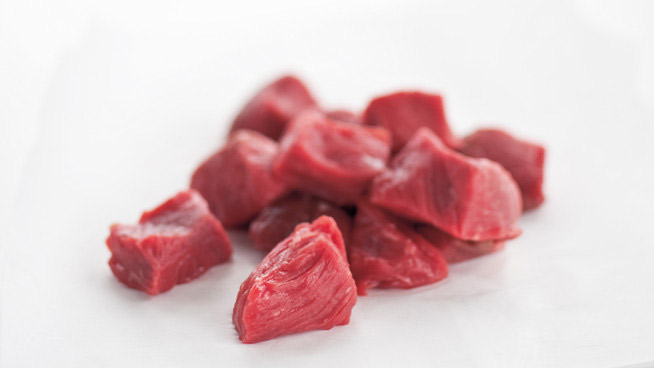The goal is to brown the meat and, in doing so, give it flavour. This browning, called the Maillard reaction, happens when meat proteins join with sugar to form new molecules responsible for roasted aromas and flavours. The Maillard reaction requires heat to occur. A lot of heat. In fact, it happens starting around 150 °C (300 °F), well beyond the boiling point of water (which is 100 °C/215 °F). This is why boiled meat does not brown.
Result: boiled meat
The surface of the meat will not reach the temperature required to trigger the Maillard reaction if the pan is not hot enough and is overcrowded with meat. Juices released by the meat build up because there is not enough space between pieces to allow contact with the pan’s hot surface and quickly evaporate. This juice surrounds the meat and starts to boil. The meat has a gray colour and it tastes like boiled meat!
Result: browned meat
If the pan is hot enough and there is space between pieces of meat, the juice will evaporate almost instantly on contact with the surface of the pan (this is the “pschit pschit” sound we hear!). The bottom of the pan is still hot and dry, which allows the Maillard reaction to do its job. The meat is nicely browned and gives off a delicious roasted aroma. As an added bonus, once the meat is removed from the pan, it can be deglazed with wine, broth, water to produce a delicious sauce full of flavour and colour.
Stir or not?
Resist the temptation to stir the meat as it cooks. Sure, it may stick, but be patient! It will come off like magic once browned. If you stir while cooking, meat cells will split open and release even more juice. The meat finds itself in a puddle of water and starts to boil instead of roast. Wait until the pieces of meat are brown before turning them.
Add salt or not?
Contrary to popular belief, there is nothing wrong with salting meat before cooking. It is true that salt brings a bit of juice to the surface of the meat, but this effect takes time, several hours in fact, depending on the type of meat and cut. When meat is salted at the last minute, the amount of juice lost is negligible and does not affect the browning.

